Glen Snow – 8 March, 2022
A second look is compelled, not only by the devoted modelling of volume and light, but by the very objectness of the painting itself. It is like looking at a slab of sandstone. It is this physicality which seems to press home the very spareness of the figure paintings themselves. The women are stripped of the usual narratives of place or time that might help us locate this question of contemporaneity. Yet there is something about the women that seems more naked-and-now than nude-of-times-past.
Jennifer Mason‘s Triple Figure is on view at Window this month, centred behind its huge glass panels where the work seems to float like a neo-classical study for Oreads in a William-Adolphe Bouguereau painting. There are some problems with this image I’ve just evoked, but the interest in measure and balance clearly reinstates the symmetries and structure of antiquity under review. Is this contemporary?
This question first confronted me last year. I had stepped into Jennifer Mason‘s studio, a spacious sky-lit room somewhere in the Corban’s Estate. Standing before her new oils, the unclothed and pastel-hued bodies of Pākehā women lolled into view. They were all similar but different: tripled, doubled and single figures—all exercises in beige.
They are simply nudes, in one dismissive sense: lovingly bound to their old world conventions. Yet a second look is compelled, not only by the devoted modelling of volume and light, but by the very objectness of the painting itself. It is like looking at a slab of sandstone. It is this physicality which seems to press home the very spareness of the figure paintings themselves. The women are stripped of the usual narratives of place or time that might help us locate this question of contemporaneity. Yet there is something about the women that seems more naked-and-now than nude-of-times-past.
No doubt they are off kilter within the Auckland art scene, but this distinction seems knowing rather than naïve. We might apply, in different terms, philosopher Giorgio Agamben’s sense of an ‘out-of-jointness’ which he attributes to the very idea of a contemporary. Tim Griffin, the former editor of Artforum, applied Agamben’s phrase to our current moment, saying “Something is contemporary when it occupies time disjunctively, seeming always at once ‘too soon’ or ‘too late,’ or, more accurately in terms of art now, seeming to contain the seeds of its own anachronism.”(1) Mason certainly plants anachronism deep in the soil of her work, but she seems also to reimagine the romantic form of past academies as a sculptural fact. She seems to want to strip this nude until it is centred in its own gravity: all mass, weight and volume. Perhaps, thinking like a sculptor, it’s a body that displaces the air of its own history for the simple bareness of its certainty. She makes room for a real body.
The artist herself knows what it is to partake of a contemporary art scene. She has been through Elam to postgrad and spent most of her Masters’ year at Glasgow School of Art. Although she has also previously exhibited photography, it was her rubbery-foamy-hosey sculptures and latex-clad videos, full of humorous bourgeois-critique and absurdity, that I remembered fondly. She does not step away from this art scene so much as found her own out-of-jointness within it.
While the common meaning for ‘contemporary’ is our “existing at the same time” (2), the philosopher Peter Osborne was interested in the way different times were implied by the Latin root of this word. He compared this to Kierkegaard’s philosophy of ‘sametimeness’ (3) where the emphasis was in “the act of conjoining times to produce an immediate (paradoxically de-temporalised) temporal unity.”(4) This act of mediating different temporal modes was foregrounded as a feat of one’s commitment. Contemporary, in this sense, is less the given of our shared times than a deliberate act of presenting newly joined-up moments.
The paintings before me, as with Triple Figure, were altogether more earnest than Mason’s sculpture or video. Previous shades of whiteness—the milky, the creams, the Peony pinks and the beiges—were no longer centred in the fun of ‘flesh-coloured’ leotards or odd intestinal and organic forms of latex, foam and bandage. This signature pallet of pumice, creamy latte, unbleached silk, and pale apricots was now squarely centred in a deep European history of pastel and porcelain-skinned ideals. But the un-clothed bodies brushed before me were not declaring an idealised feminine form. The former latex skins and awkward, so-called, nude-coloured leotard had now been cast off for the nude herself. In doing so, the artist’s comic awkwardness was swapped for the awkward history of that nude. Moreover, the nude was doubled here as subject and colour.
‘Nude,’ of course, is problematic as the designation of a single type of colour. Synonymous with “‘flesh’, and even the less common ‘suntan’ and ‘bare’ … [these] presuppose a Caucasian skin tone”(5)—a Western European centricity. The colour, as a fashion trend, was part of some controversy back in 2010, when Michelle Obama wore a garment “described by its designer Naeem Khan as a ‘sterling-silver sequin, abstract floral, nude strapless gown’.”(6) Paula Cocozza, reporting for The Guardian, describes how on the runways of “Paris, Milan, London and New York, these pale shades were presented almost uniformly on pale skins. It’s a look that’s all about white skin.” Cultural studies professor for the London College of Fashion, Reina Lewis, is quoted by Cocozza pointing out that against Michelle Obama’s “skin ‘nude’ is revealed as a colour rather than neutral.”(7) Although commercially, the colour ‘nude’ has, in recent times, shed its Eurocentric presumptions, transforming into a spectrum rather than a hue, a quick google search of ‘nude the colour’ still looks very Caucasian.
We of the European West have also inherited a tendency to read our pallor as a neutral blend synonymous with the blank canvas or un-primed linen. We don’t really see our race there: only an unspecified universal humanity. Our white skin too often can matter as this sort of unseen surface, as a base layer or primary condition before all else can be pictured in the world. When we look at Mason’s women, however, we are not looking upon the zero degree of all womanhood. Mason wants us to see this colour which fills background and foreground. She is trying to rethink this precise pallid creature of history as against her pākehā peers.
Yet, in a history of pale recumbent-women what could such twenty-first-century Olympias add? They are not coy, acquiescent or, on the other hand, defiant. They are simply unencumbered.
Their sex is revealed naturally but the model herself has chosen to shave. Lack of pubic hair for the model might be a choice in styling but painted, this denuded vulva can be read as sexless or strangely prepubescent in our times: particularly odd when there is a belly clearly bearing a small life. It can also remind us of those histories again, when women were barely warmed-up versions of smooth Grecian marble. In fact, it seems to be a case of life imitating old art where such images of the Greek have long and repeatedly “structured the cultural imagination in such a way as to make the glabrous female body an entrenched and irresistible feminine aesthetic.”(8) Hair still signals something too wild or barbaric to be ‘feminine’ in our society. The feminine here, then, is the Classical Greek standard of European civilization. Yet this is more the model’s contribution to the work; Mason’s is to have their sex as plainly part of their nakedness: a bare fact, without drama. Our social mores are simply laid bare as well.
Mason’s figures are perfected from photographs. That picture, captured by Mason, must quiet the life of these women, smooth them out into surface. Mason is not interested in the bumps of interior life, the animating and untouchable knower. She wants nothing to distract from the body and the folded phenomenon of its volume and weight. Yet while a long past of the reclining nude is at the base of her subject, her women do not present in the manner of the former odalisque. The theatricality of all those old Venetian Venuses, Rococo nymphs, Orientalist concubines, with their painted peach-bodies, were committed to oils for their allure, for filling the eye of male fantasy. The figure in Mason’s painting holds her space for herself.
The women tilt toward us, but it seems only for their own comfort. Their eyelids close out the world and further shut out our access to any animus. Any mood or flicker of personality has slipped behind those becalmed lids and we are left only with the recumbent body pressing and gravitating into the floor of their slumber. Mason‘s women are sleeping and look deeply comfortable. This is the body at rest, and this is its statement of the real. No posture or pose, no gesture to avail herself and no personality while being every bit a person recognisable to someone. She is very much a body in space stripped as much as possible of any mythology. Of course, this is also its fiction—a staging of the real. Mason works hard to achieve such a plain presence, where plainness bears upon our myths of the true.
Having possibly drifted into dream, the world has disappeared for these women, and ourselves, leaving only skin touching an outside we no longer see. It is an outside of the subject filled with their own pallor, extended like another skin, thin, almost venous into the space they occupy. The whole surface of the painting seems to abstract their own epidermis, stretched like vellum.
As substantial objects, the paintings are framed in white plaster and bound to the panel with hessian. The hessian remains as a trim edging between frame and board. The whole effect seems to extend the bodies they portray, where even the chalky frame might allude to bone. Artists like Jenny Saville or Lucian Freud painted flesh as chunks of meat or folding fat, Mason’s figures present the skin as a sensitive membrane extending out into the world.
There is a history of late abstraction which also registers on these ‘bare’ grounds. Their smooth complexions are scratched and scored like tracings upon itchy skin or the wild scrawl of Cy Twombly’s Academy, 1955. A surplus of daubing - the smudged, rubbed and wiped-off marks of unthought brush-cleaning—freckle the surface in absent-minded gesture. At times Mason has, instead, wiped her brush clean on a board next to her figure work, and these have become abstract paintings in their own right. I saw such a painting exhibited not so long ago. Without its occupant the minimal abstraction seemed a part-object of semi-translucent skin, signalling back to the figures and surfaces of other works. It was a painting that aesthetically networked, like a conceptual code, back to the paintings it doubled.
All the paintings seem to work as fragments. The figures are often de-centred, not complete and representative, but repeated across paintings and doubled or even trebled in a single work. There is a collaging mentality played out in repositioning figures within different temporal moments. This nude is not to be compared to another woman, but nor is she meant to be an ‘everywoman.’ She is a singular reality within multiple singular moments, different when this way and then that.
As paintings, they might appear more partial in composition when compared against histories of the female nude in oils. In such comparisons, they have a closer affinity to the Nineteenth-century studies made inside various academies. These were not complete compositions but made as preparations for a greater work of mythic proportion or as studies in their own right. In such studies, the academician never attended to the setting or background in which the model had posed. Perhaps the better to re-imagine her. These backgrounds, which after all, were only the stages of the ‘life room,’ were often left blank.
Mason’s backgrounds however, are not blanks, as previously stated. They complete a picture, painting the ‘bare’ surface as a skin. It seems to point to those women where their whiteness was an essential part of a history that revealed the nude only as a triumph of male painterly-prowess. The tonal degree of pastel easily played upon his skills in comparing them to those of the Classical sculptors. Marble, ivory, alabaster enter the mythology of erotic complexion where this wan pigment signals she can be tamed, civilised, even clothed. As a woman, Mason now interjects. The sandstone and raw honey of her work seek fidelity to the bodies of ordinary Pākehā women.
Glen Snow
(1) Tim Griffin, “Out of Time,” Artforum 50, no. 1 (September 2011): 289.
(2) Hans-Georg Gadamer expressing the usual definition as quoted by Peter Osborne in “The Postconceptual Condition: Or, the cultural logic of high capitalism today,” Journal of Radical Philosophy, 184 (March/April, 2014), 24. https://www.radicalphilosophyarchive.com/issue-files/rp184_article2_osborne_thepostconceptualcondition.pdf
(3) Peter Osborne, Ibid., 23.
(4) Osborne, 24.
(5) Kassia St Clair, The Secret Lives of Colour (London: John Murray, 2016), 110.
(6) Paula Cocozza, “Nude: is the hot fashion colour racist?” The Guardian, May 20, 2010, https://www.theguardian.com/lifeandstyle/2010/may/20/fashion-colour-nude-racist.
(7) Ibid.
(8) Historian Alice Macdonald, as quoted by Julia Fiore in “The Taboo History of Women’s Body Hair in Art,” Artsy, May 17, 2019, https://www.artsy.net/article/artsy-editorial-taboo-history-womens-body-hair-art.
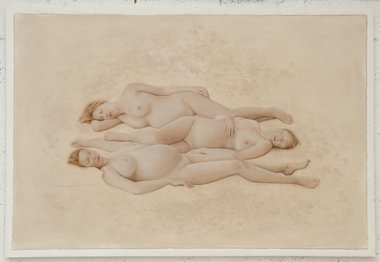
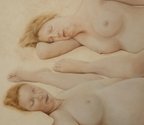
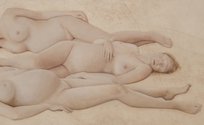
 Advertising in this column
Advertising in this column Two Rooms presents a program of residencies and projects
Two Rooms presents a program of residencies and projects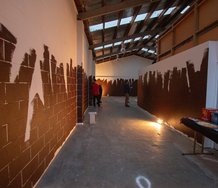
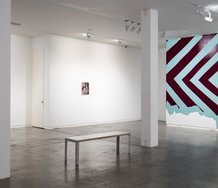
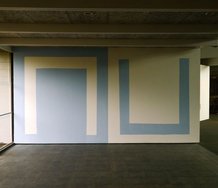
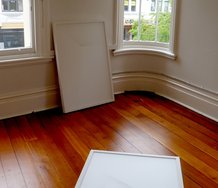
This Discussion has 0 comments.
Comment
Participate
Register to Participate.
Sign in
Sign in to an existing account.